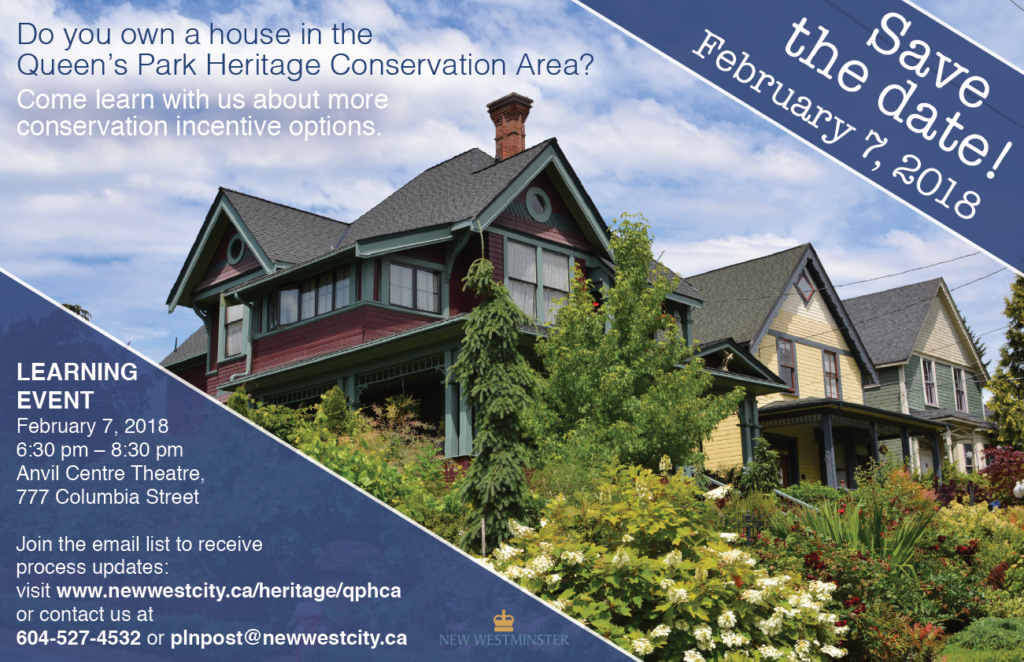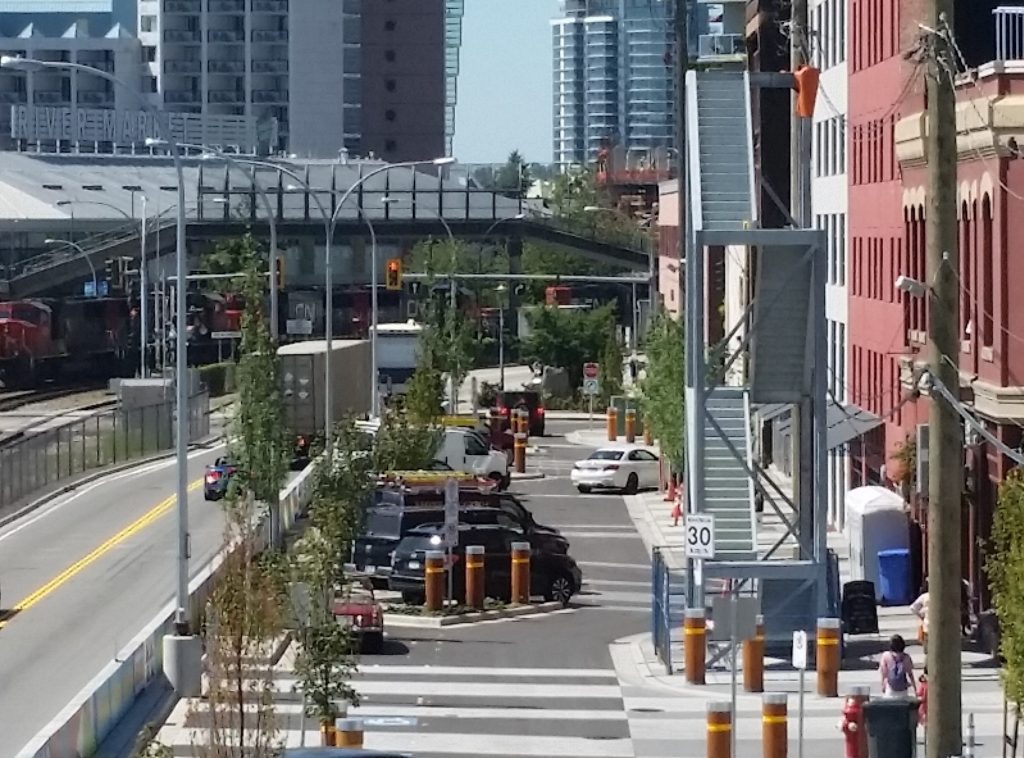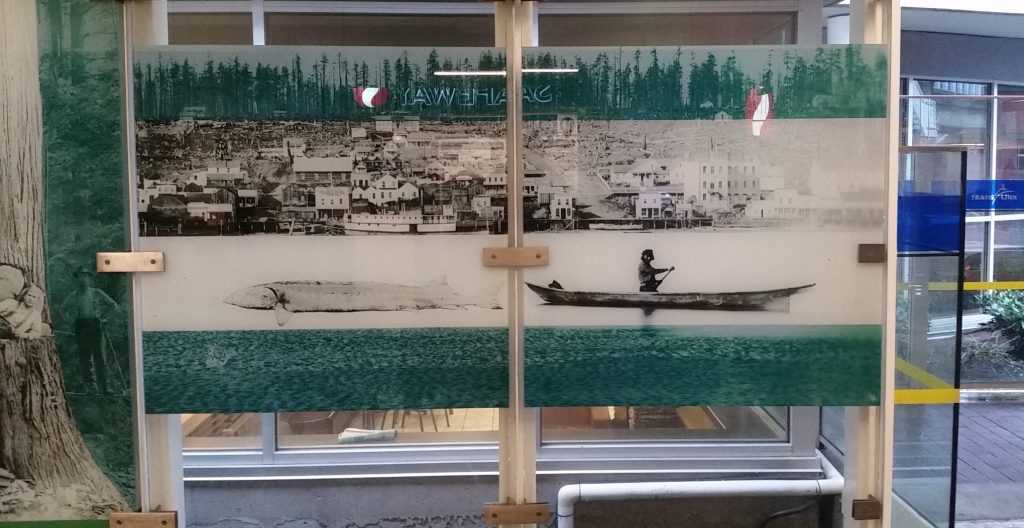There were two items I promised follow-up from last council meeting. This one deserves a deeper dive because it was a complicated conversation that resulted in a complex discussion at Council with several amendments and re-directions, all because the public policy and eventual outcomes were not obvious.
This is a result of a decision back in 2021 by Council to put a “freeze” on HRA applications in the Queens Park HCA, and a staff recommendation that we now lift that freeze. And yeah, those acronyms are confusing. So I’ll try to unpack.
The residential neighbourhood of Queens Park has been designated a Heritage Conservation Area (“HCA”); one of the largest in the province. Because of the unique and provincially-significant collection of pre-1941 single family homes that meet the standard of having “heritage” merit, the neighbourhood and the Community Heritage Commission recommended the City put in an HCA a few years ago to provide extra protection to those homes. If you really want the background, here is my blog post from when it occurred.
Heritage Restoration Agreements (“HRAs”) are a planning tool that can be (and are) applied anywhere in the City. They are rather like a rezoning, in which a property owner asks to do something that is not permitted in the current zoning (i.e. build a duplex on a single family lot) in exchange for providing some value to the community or meeting some City policy goal. In the case of HRAs, it is essentially a rezoning where the “value” being exchanged is the permanent preservation of a heritage asset.
It is important to note that “designation” of a preserved heritage asset under an HRA is the highest level of heritage protection available to local governments in BC, and a much stronger level of heritage protection than is offered to the pre-1940 “protected” houses in the HCA. For this reason, alterations of heritage properties in the HCA usually come about through an HRA. If the owner of a pre-1940 HCA-protected house in Queens Park wants to make an exterior alteration, add a carriage or laneway house, lift the building to put in a full basement or put in dormers that increase the livable square footage of the home, they come to the City to ask for an HRA. Through an extensive review to assure the heritage merit is protected, and through a (by regulation) Public Hearing, the Council either permits the change in exchange for “designation”, or does not. HRAs are also used outside Queens Park, but within Queens Park HCA they are essentially the only tool to allow alterations of pre-1940 homes, so they are more common there while other neighbourhoods are more familiar with other rezoning tools.
Since the adoption of the HCA, some members of the Queens Park community felt that HRAs were being applied in a way that was not complimentary to the HCA principles. I’ve heard criticism that HRAs were being granted with no benefit to the community, that they were an “end around” of the regular rezoning process. I don’t agree with these assertions, but they did lead to a few fractious HRA Public Hearings, and staff suggested we “pause” the processing of HRAs in Queens Park for a bit of time to let some policy work be done to update HRA principles across the City.
Unfortunately, this HRA process work has been repeatedly delayed by staff shortages and Council’s decision to prioritize other housing work – putting together affordable housing applications, an inclusionary housing policy, 22nd Street Area master planning, and applications coming that will help us meaningfully address the critical housing needs identified in our Housing Needs Assessment. Frankly, the HRA work was going to take up too much staff time and consultation energy for the value (and number of housing units) they provide the community during a housing crisis. Because of this, the “freeze” on new HRAs in Queens Park has dragged on for two years. Staff brought this report to us recommending we lift the freeze, because the work to update the HRA system (now wrapped into a more comprehensive Infill Density Policy Review) is not resourced to happen until 2025.
This is a question of balancing procedural fairness (people should be able to apply for rezoning or HRAs and understand the process that is available for them) with the common-good and heritage protection principles of the HCA.
During the conversation at Council there was a proposal to refer this question to the Community Heritage Commission – an advisory commission the city has to bring subject matter expertise to exactly this question: how to best evaluate heritage merit and balance its protection against other City policy and priorities? There was also a suggestion that applicants caught up in the “freeze” in 2021 be unfrozen to allow them to proceed with HRAs if they are still so inclined, but to maintain the freeze otherwise until the policy work is completed. Finally, the recommendation from staff to lift the freeze was put on the table, with the proviso that HRA applications not be prioritized over more critical housing work reflected in our Housing Needs assessment and overall housing policy direction.
This was a lengthy conversation, and I don’t want to speak for others at Council here, because the votes were split in different ways as we moved through the amendments, and everyone clearly had different comfort levels on this balance we were trying to strike. Instead, I will speak to my motivations for voting as I did.
When the HCA was introduced back in 2017, I supported in on the strict proviso that it would not stop all housing change in Queens Park – that the HCA should work to facilitate heritage-informed development of more housing diversity in Queens Park, and not act as a tool to prevent housing diversity in the neighbourhood. In the blog post I linked to above, I said it this way:
“the HCA policy cannot stop all development, infill density, or other ways of increasing housing choice in the Queens Park neighbourhood. We need to accelerate our work towards increasing laneway and carriage house infill, stratification of large houses if they wish to re-configure into multi-family buildings, and protecting the multi-family housing stock that already exists in Queens Park. The HCA as adopted will not prevent that progress,”
On a similar vein, I voted against the HRA freeze in 2021 because I felt it shifted the balance too far towards stopping the evolution of Queens Park by not even allowing change if it worked to improve heritage asset protection.
My position has not changed much here, and I voted with the slim majority of Council to lift the freeze, as recommended by Staff. I was not opposed to referring to the CHC for feedback prior to the lifting of the freeze, but that was defeated by another slim majority of Council. I also support the general direction to staff that we don’t need to prioritize this type of low-density infill at this time, and that is NOT consistent with my previous feelings and votes at Council.
Simply put, we are not in the same place now as we were in 2017 when we approved the current Official Community Plan. At the time, infill density was seen as an important part of our housing strategy, to bring more affordable but still market “family friendly” housing diversity in the community. In the last few years, land values in New West have grown to the point where infill is going to play less of a role in meeting our housing needs in the next few years, as higher-density forms re going to be needed to hit that lower-end-of-market and family-friendly sweet spot.






 My first reaction was to think that a fire escape, by its very nature, would be used by a half-dozen people only once, if at all. This structure looks like it was engineered to facilitate the boarding of troops onto naval vessels. However, I am told that modern fire access standards for commercial buildings expect that well-equipped firefighters will use the stairs, and carry large things up and down them with some significant urgency. The stairs are also expected to remain standing after a seismic event that no ~100-year-old heritage building was built to sustain. So it is bigger, stronger, and with a much more substantial foundation than the stairs going (for example) up to the back deck in my house. It is also a modular design that can be picked up and moved, as it was recognized at the time as a “temporary” structure, which can be utilized elsewhere if ever major renovations to the ~100-year-old heritage building make the stairway’s presence on Front Street no longer necessary. Put these factors together, and the design, fabrication and installation costs are more than my aforementioned deck stairs.
My first reaction was to think that a fire escape, by its very nature, would be used by a half-dozen people only once, if at all. This structure looks like it was engineered to facilitate the boarding of troops onto naval vessels. However, I am told that modern fire access standards for commercial buildings expect that well-equipped firefighters will use the stairs, and carry large things up and down them with some significant urgency. The stairs are also expected to remain standing after a seismic event that no ~100-year-old heritage building was built to sustain. So it is bigger, stronger, and with a much more substantial foundation than the stairs going (for example) up to the back deck in my house. It is also a modular design that can be picked up and moved, as it was recognized at the time as a “temporary” structure, which can be utilized elsewhere if ever major renovations to the ~100-year-old heritage building make the stairway’s presence on Front Street no longer necessary. Put these factors together, and the design, fabrication and installation costs are more than my aforementioned deck stairs.



